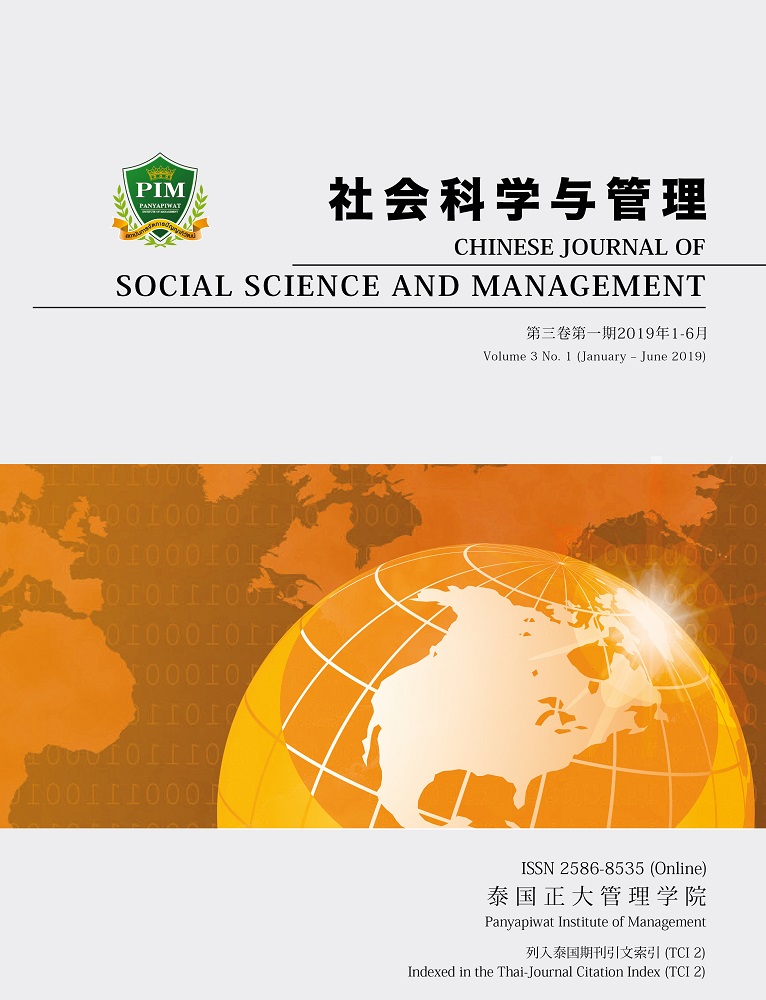TEACHERS’ DAY IN THAILAND: A TESTAMENT OF TEACHER–STUDENT RELATIONSHIP IN TEACHING CHINESE AS A FOREIGN LANGUAGE
Main Article Content
Abstract
The teacher-student relationship is a special kind of social and interpersonal interaction. It is a qualitative and multi-level system which is designed to form and achieve educational goals. Because the
teaching of Chinese as a foreign language is aimed at international students, the special characteristic of it also determines the special characteristic of the relationship between Chinese teachers and students. In this paper, Thailand Teachers’ Day is chosen as an example to prove that the relation between teachers and students in Thailand is a kind of mutual love and respect. This is conducive to reconstruct the teacher-student relationship in the teaching process and improve the teaching quality.
Article Details
Chinese Journal of Social Science and Management Editorial Division
The Office of Research and Development, Panyapiwat Institute of Management
85/1 Moo 2, Chaengwattana Rd., Bang Talat, Pakkred, Nonthaburi 11120, Thailand
Tel. 02 855 01048 E-mail: [email protected]
References
Colin, B. (2008). Introduction to Bilingual and Bilingual Education. Beijing: Central University for Nationalities Press. [in Chinese]
Cheng, Y. Z. (2005). History of the Development of Teaching Chinese as a Foreign Language in New China. Beijing: Peking University Press. [in Chinese]
Herbart, J. F. (2002). General Pedagogy. Outline of Pedagogy Teaching. Zhejiang: Zhejiang Education Press. [in Chinese]
He, L. Y. (2010). The status quo, problems and reflections of teacher training in Thailand. Journal of Linguistics, 2(4), 3-4. [in Chinese]
Huang, H. (2011). Analysis of the differences between Chinese and Thai cultures. Legal system and economy, 1(12), 10-12. [in Chinese]
Jiao, L. (2002). Exchange of experience in teaching Chinese as a foreign language. People’s Daily Overseas Edition, 7(8), 6-8. [in Chinese]
Luo, M. D. & Shi, H. X. (2002). Education. Yunnan: Yunnan University Press. [in Chinese]
Liu, X. (2007). Introduction to Teaching Chinese as a Foreign Language. Beijing: Beijing Language and Culture University Press. [in Chinese]
Ni, H. (2002). Education. Beijing: Peking University Press. [in Chinese]
Wang, T. Y. (1985). History of Foreign Education. Beijing: Beijing Normal University Press. [in Chinese]
Wu, J. (1989). Main Foreign Modern Education Schools. Jilin: Jilin Education Press. [in Chinese]
Weng, Y. H. (2014). A Preliminary Study of Humanistic Teaching Method. Beijing: Educational Science and Art. [in Chinese]
Wu, B. H. (2008). Constructing a new relationship between teachers and students under the new curriculum concept. Journal of Heilongjiang Provincial Institute of Education, 5(2). 13-14. [in Chinese]
Xiang, J. H. (2012). A brief talk on the new teacher–student relationship. “Current Affairs” junior high school edition, 7(8). 9-11. [in Chinese]
Xue, P. (2009). On the influence of Buddhism on higher education in Thailand. Doctoral dissertation, Guangxi Normal University. [in Chinese]
Zhang, M. C. (2012). On the characteristics and functions of teacher-student relationship in Chinese middle school Chinese education. Doctoral dissertation, Guangxi University. [in Chinese]
Rodkayapai, C. (2005). Introduce Nakhon Pathom. Retrieved December 20, 2018, from https://dept.npru.ac.th/plan/system/20170426141059_1 ed 94 ce 14549 ab 9 fa 5 d 631 c 588 d 2801 f. PDF
Chanfahchamroon, S. (2003). Thai music, Wai Kru. Retrieved January 9, 2019, from https://www.chulapedia.chula.ac.th/index.php?title

